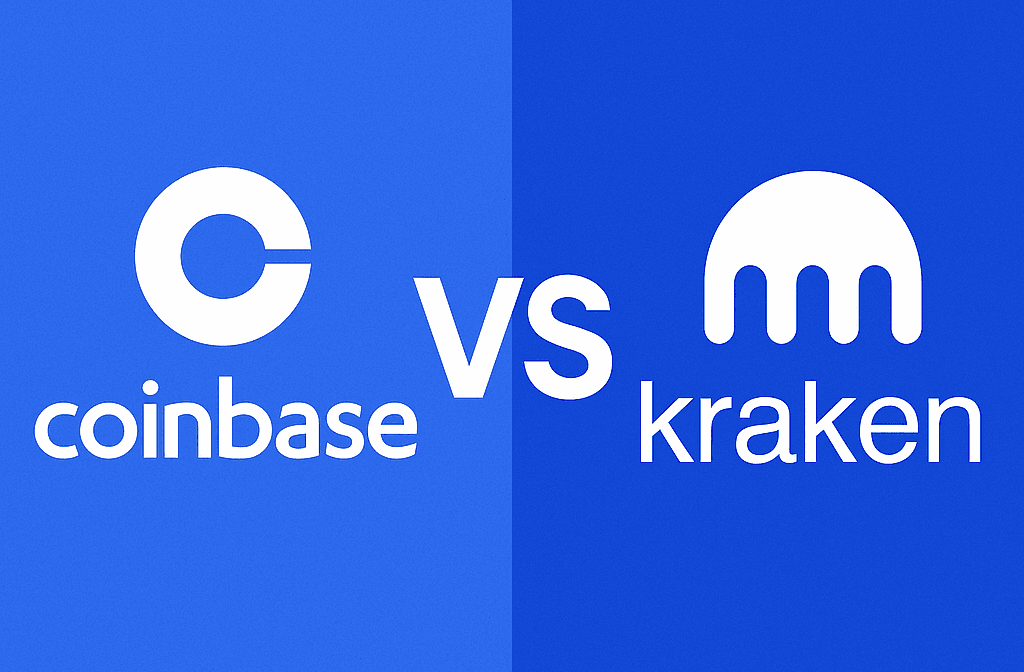Coinbase vs Kraken Staking: Which Platform Pays More?
By expert

As crypto staking gains momentum, choosing the right exchange can significantly impact your earnings. Two of the most popular platforms—Coinbase and Kraken—offer crypto staking, but which pays more?
In this blog, we’ll break down staking rewards, fees, supported assets, features, and user experience to help you decide which is best for your crypto portfolio.
💳 What is Crypto Staking?
Crypto staking involves locking your tokens in a blockchain network to support its operations (like validating transactions) in return for staking rewards. It’s a passive income strategy that’s grown popular, especially on platforms like Coinbase and Kraken that simplify the process.
Key Benefits of Staking:
- Earn passive income
- Support blockchain networks
- Potential compounding interest over time
Want to understand staking in more detail? Check out our Crypto Staking Beginner’s Guide.
🔄 Coinbase vs Kraken: Side-by-Side Comparison
| Feature | Coinbase | Kraken |
|---|---|---|
| Available Assets | ETH, ADA, SOL, XTZ, ALGO | ETH, ADA, DOT, KSM, ATOM, XTZ, FLOW |
| Staking APY (ETH) | ~3.5% | ~5% |
| Staking Fees | ~25% commission | ~15% commission |
| Payout Frequency | Varies (e.g., ETH every 3 days) | Weekly or bi-weekly |
| Unstaking Flexibility | Delayed (ETH may take days to unstake) | Flexible, varies by asset |
| Regulation & Security | Highly regulated, user-friendly | Less regulated, advanced features |
Curious about other exchanges? View our full Crypto Staking Exchange Comparison.
💸 Earnings Showdown: Which Pays More?
If your goal is to maximize staking returns, Kraken typically outperforms Coinbase. Let’s break it down:
✔️ Kraken wins with:
- Higher APYs: On assets like ETH and DOT
- Lower fees: 15% vs 25% on Coinbase
- More supported assets: Greater flexibility for diversification
- Flexible unstaking: Especially important for active investors
✔️ Coinbase wins with:
- Ease of use: Perfect for beginners
- Clean UI and UX
- Regulatory compliance: Strong brand trust, ideal for U.S. users
🔍 Real World Example: ETH Staking Comparison
- Coinbase ETH staking: ~3.5% APY – 25% fee = ~2.6% effective yield
- Kraken ETH staking: ~5% APY – 15% fee = ~4.25% effective yield
If you stake $1,000 worth of ETH:
- Coinbase earns ~$26 annually
- Kraken earns ~$42.50 annually
Want to do the math yourself? Use our Crypto Staking Calculator to estimate earnings across platforms.
🌐 Security & Trustworthiness
Both exchanges are considered secure, but there are differences:
- Coinbase is a publicly traded company in the U.S. with heavy regulatory oversight
- Kraken is reputable with strong security protocols but operates with fewer regulatory constraints
Ultimately, both are safe for staking, but Coinbase might offer more peace of mind for conservative users.
📝 Final Verdict: Kraken Pays More
If maximizing staking returns is your priority, Kraken is the better option. It offers:
- Higher effective yields
- Broader asset support
- More flexible staking and unstaking
However, if you value simplicity, regulation, and a clean interface, Coinbase remains a great choice.
Still not sure? Browse live APYs using our Staking APY Widget to make a data-driven choice.
👀 Featured Snippet Outline
Question: Which is better for staking: Coinbase or Kraken?
Answer: Kraken typically pays more for crypto staking than Coinbase due to higher APYs and lower commission fees. While Coinbase is easier to use and heavily regulated, Kraken supports more assets and offers better returns—making it the more profitable option for experienced stakers.
❓ Frequently Asked Questions (FAQs)
1. Which platform offers higher staking rewards—Coinbase or Kraken?
Kraken generally provides higher staking rewards because of lower fees and higher APYs on supported assets.
2. Is Kraken staking safe?
Yes, Kraken uses top-tier security protocols, though it operates with fewer regulatory restrictions than Coinbase.
3. Does Coinbase take a cut from staking rewards?
Yes. Coinbase typically charges a 25% commission on staking rewards, which reduces your effective yield.
4. Can I unstake anytime?
Kraken offers more flexibility in unstaking, while Coinbase may have waiting periods depending on the asset (especially Ethereum).
5. Where can I compare live staking rates?
Use our Staking APY Widget to track real-time staking rates across major exchanges.
🤔 Your Turn: Which Platform Do You Prefer?
Have you staked crypto on either Coinbase or Kraken? Share your experience in the comments below—
